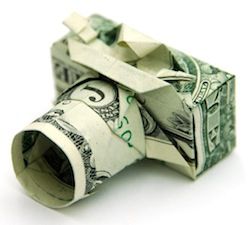Consumer Behavior
Out of Sight, Out of Mind
The true costs we face are often hidden. What prompts us to think about them?
Posted August 6, 2012
Every choice comes at a cost: choosing one alternative means giving up another. By spending time writing at my local coffee shop, I cannot spend that time hiking in the mountains. By having Mexican food for dinner, I cannot have sushi. And by spending $5 on beer, I cannot spend that $5 on lunch. Or on gas for my car. Or towards a down payment on a home. Or on a donation to charity. You get the picture. The true cost of that $5 beer is whatever the next best use of that $5 would have been; that’s the opportunity cost of buying the beer.
Such opportunity costs are critical decision inputs, but people often neglect them. A recent paper by Shane Frederick and colleagues elegantly demonstrated that without explicit reminders, people act as though they do not have any opportunity costs. Merely reminding consumers given the option to buy a DVD that “not buying the DVD” means “holding onto that money for other purchases” (a fact that is self-evident upon a moment’s reflection) decreases the number of people buying the DVD!
Why do people neglect such an important and obvious factor in their purchase decisions? It turns out that “What can you do with $10?” is a surprisingly difficult question to answer. Elke Weber and Eric Johnson have found that because of the way our memory is structured, it is difficult for people to generate examples of categories like “things to do with $10” even when prompted. We are more likely to use inputs that come to mind more easily, so if it’s hard to think of opportunity costs, we’re unlikely to use them in our decisions. The result is that when given the opportunity to buy a DVD for $10, we ask ourselves “Do we want to buy the DVD or not?” rather than “Do we want to buy the DVD or use the money on something else instead?” If we like the DVD, it’s easier to say yes to the first question than the second.

A dollar is what a dollar buys.
This begs an important follow-up: What if other uses did jump to mind? Would we be more likely to think of other alternatives as potential opportunity costs? A paper based on my dissertation research suggests the answer is “yes!” Some forms of money are so closely associated with certain products that the money makes those products jump to mind. Consider a Starbucks card, one particular type of money. I’d wager that you immediately thought about coffee as one possible use. Starbucks is so closely associated with coffee for most people that the thought of a Starbucks card triggers the thought of coffee automatically. As a result, people think about coffee as a potential opportunity cost when they spend a Starbucks card.
Why does that matter? A $10 bill is always at least as valuable as a $10 Starbucks card—you could use your $10 bill to buy anything, including a $10 Starbucks card—but that value is not so obvious when no good alternative uses come to mind. To test whether this holds, I asked one set of self-proclaimed Starbucks lovers whether they were willing to make a $10 purchase using a $10 Visa card—85% said they were. I asked another set whether they were willing to make the $10 purchase using a $10 Starbucks card—only 63% said they were! The $10 Visa card had to be at least as valuable as the Starbucks card, and yet these Starbucks lovers were more willing to spend it! Apparently opportunity costs did not come to mind when using the Visa card but did when using the Starbucks card.
What are the broader implications? Stretching beyond the data, some people are concerned that they don’t pay enough attention to the tradeoffs they face. For these people, using “mental budgets” (for food, for entertainment, for clothes, etc.) can help them automatically think about tradeoffs by creating associations between money and its possible uses. Just like in the Starbucks study, having a mental budget for food can change a decision from one of “should I spend this money on happy hour today?” to “should I spend this money on happy hour today or on groceries tomorrow?”
In the coming weeks and months, I’ll discuss findings like these through this Costly Choices blog, including research on how people think through and make costly choices, how they spend their money, how they plan ahead for the future, and related topics in consumer behavior. Until then, when faced with a tempting purchase, try asking yourself “how else could I spend this money instead?” And then when you find yourself paralyzed with indecision (a topic for another entry), just enjoy the beer.


